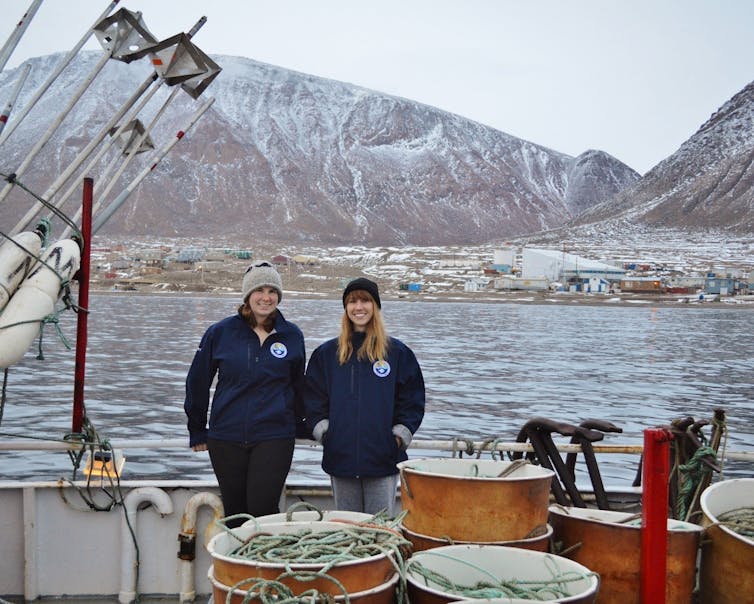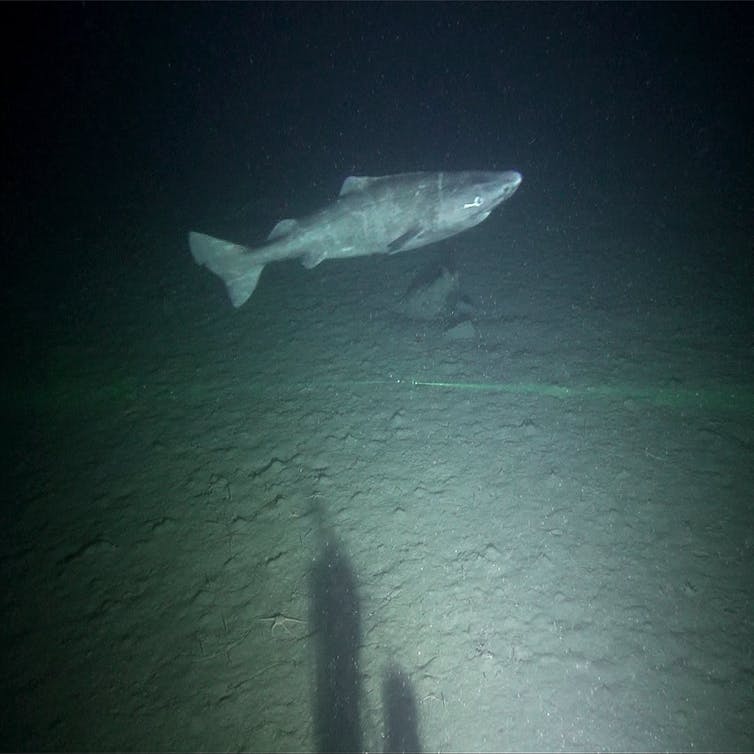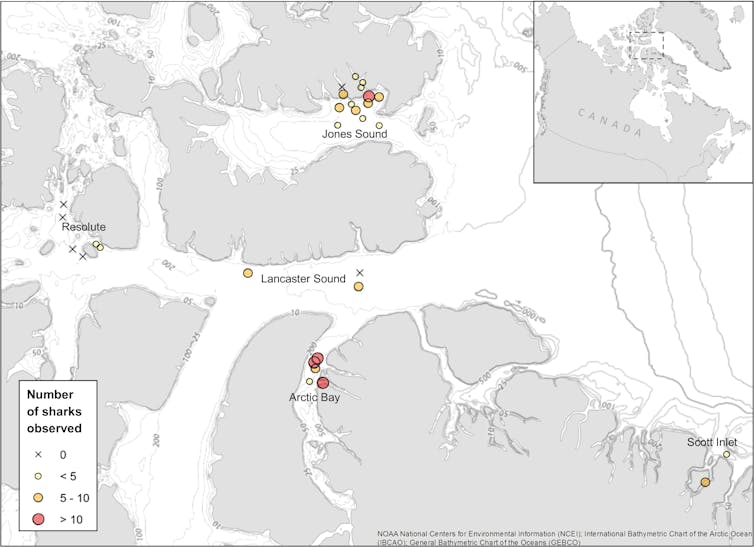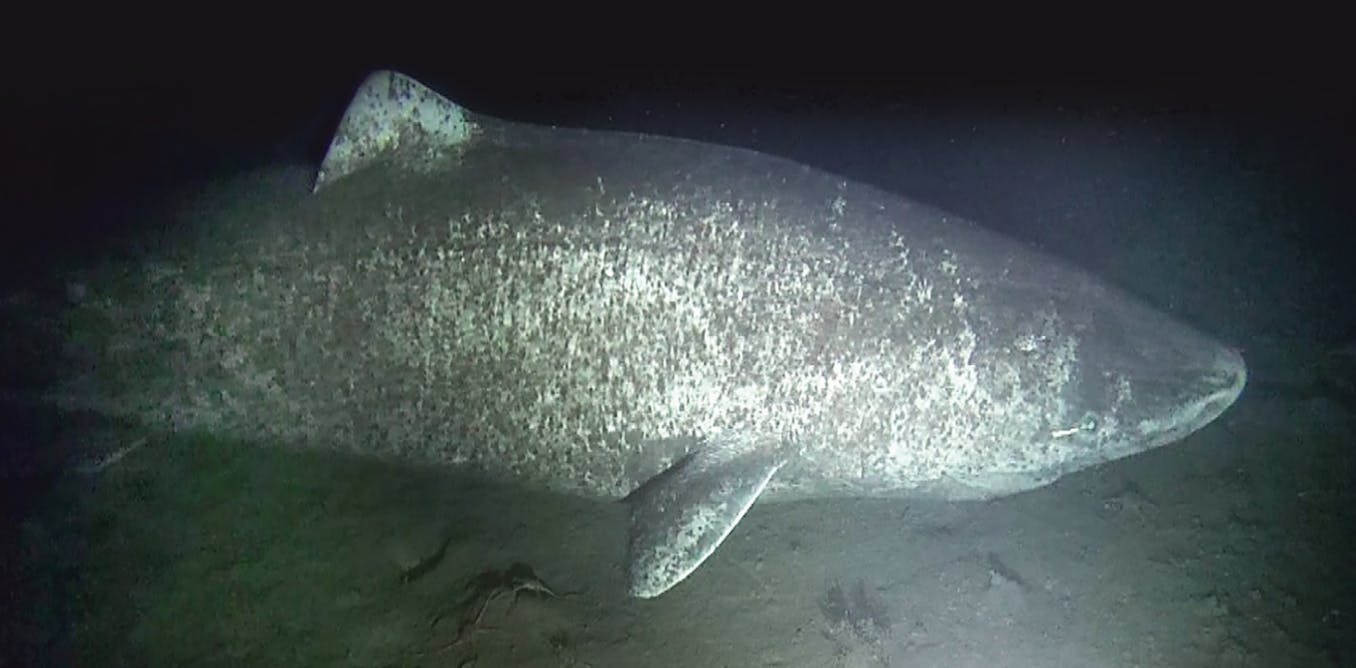Caught on camera: Ancient Greenland sharks
The Greenland shark is one of the world’s largest marine species,
reaching lengths over six metres. And yet these fish, which prefer the
deep, cold waters of the Arctic and North Atlantic oceans, have largely
eluded scientific study.
Their evasiveness highlights how little we know about Arctic marine
ecosystems — and how much we can learn by developing and employing new
technologies.

However, we recently captured some of the first underwater video
footage of Greenland sharks in the Canadian Arctic. The recordings gave
us valuable insight into their abundance, size and behaviour, as well as
their distribution in the Canadian Arctic.
These findings are the first step towards closing a major knowledge gap on the population status of the Greenland shark.
And we did it without taking any sharks from the water.
Sleeper sharks revealed
Até agora, a maior parte do que sabíamos sobre os tubarões da Groenlândia vinha dos registros históricos de desembarques comerciais. Eles foram pescados no Atlântico Norte por seus fígados oleosos até 1960. Uma colheita limitada ainda ocorre na Groenlândia, e a espécie é algumas vezes encontrada como captura secundária em pescarias que ocorrem dentro de sua área geográfica.
Mas em áreas do Atlântico Norte e do Ártico, onde a pesca comercial não ocorreu historicamente - como as águas do Arquipélago Ártico Canadense -, sua distribuição geográfica permanece desconhecida.
Due to their sluggish and seemingly lethargic behaviour, the
Greenland shark is part of the family of “sleeper sharks.” Despite being
remarkably slow swimmers and effectively blind, thanks to eye parasites, the Greenland shark is one of the Arctic’s top predators.

Greenland sharks are by far the largest fish in the Arctic. They rival the Great white shark in length, if not its fear factor.
Scientists have also puzzled over their life span and growth rates. They appear to grow extremely slowly — less than one centimetre per year — and are believed to not reach maturity until females are 4.5 metres long and males are three metres long.
They also have remarkable lifespans. Scientists recently used radiocarbon dating techniques on the eye lens of a Greenland shark, and found they can live for more than 272 years, making the species the longest living vertebrate on the planet.
While these are impressive traits, their age and large size leave Greenland sharks more vulnerable to stressors such as overfishing or habitat loss than other fishes.
Candid camera
Scientists know little about Greenland sharks living in the unfished waters of the eastern Canadian Arctic. To help collect information on sharks residing in this region, we baited cameras with squid and dropped them into the deep waters of Nunavut.After two summer field seasons, we had more than 250 hours of high-resolution video recorded from 31 locations.
Greenland sharks arrived at 80 per cent of our deployments. We used the video to distinguish one individual from the next based on their unique skin markings, a method researchers also use to identify for whale sharks and great white sharks. Altogether, we identified 142 individual sharks.
Researchers are increasingly using video to survey marine wildlife. Baited-camera surveys eliminate the adverse effects of scientific longline surveys, where fish are caught on hooks. Even though the sharks are later released, many suffer from the stress of capture or can become entangled in the fishing gear, which can lead to death.
New information for a changing Arctic
We did most of this work within the region of Tallurutiup Imanga (Lancaster Sound), which could become Canada’s largest marine protected area.This area is known as a vital feeding and nursery ground for many Arctic species of both ecological and Inuit cultural significance, including whales, seabirds, polar bears, seals and walruses. Our video data now shows that this area might of be important to Greenland sharks too, at least in summer months.

At a time when oceans are rapidly warming, Arctic sea-ice cover is shrinking and there is increasing interest in Arctic fisheries and conservation, it’s important that we understand the domains of these large, ancient creatures.



Nenhum comentário:
Postar um comentário
Observação: somente um membro deste blog pode postar um comentário.